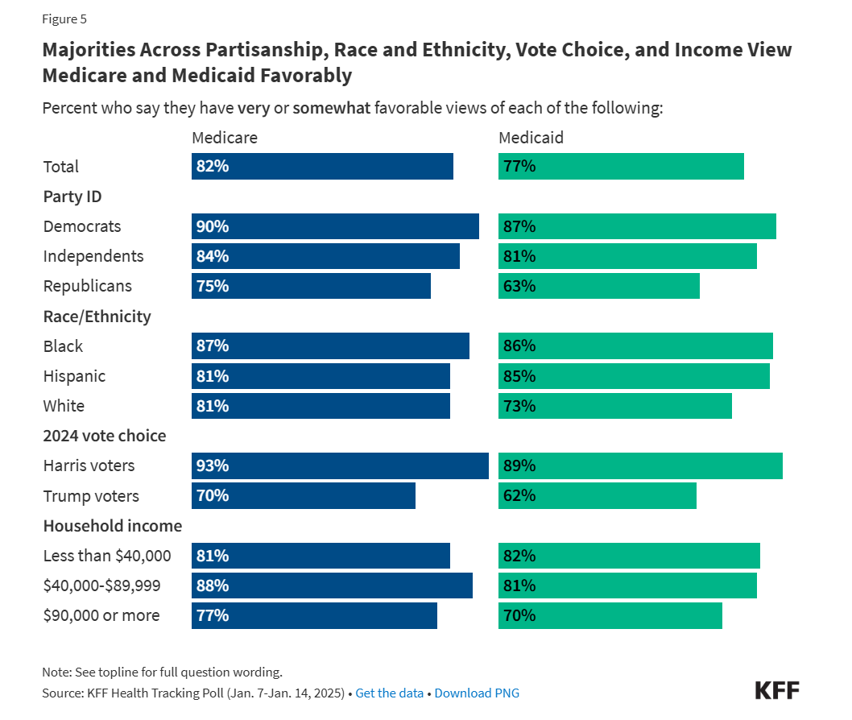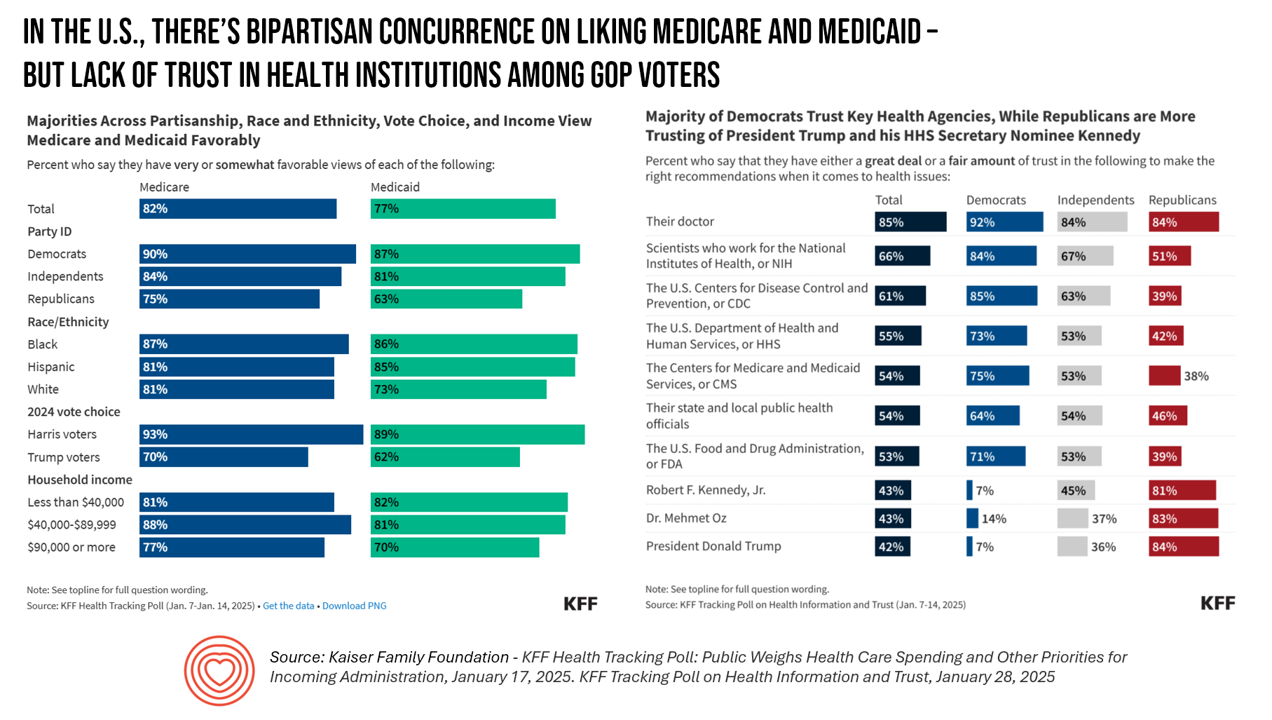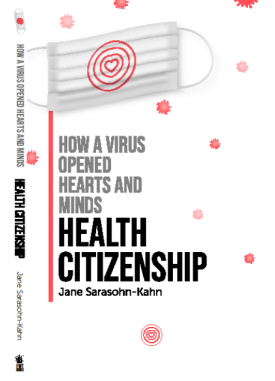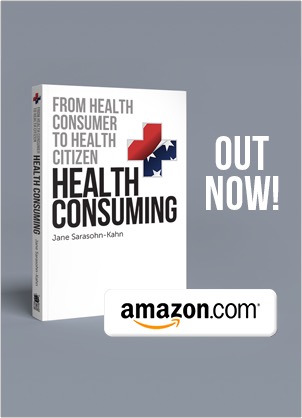Two polls from one poll source paint at once a bipartisan and bipolar picture of U.S. health citizens when it comes to health care issues versus health care institutions in America. The Kaiser Family Foundation has hit the 2025 health policy ground running in publishing the January 2025 Health Tracking Poll last week and a poll on health care trust and mis-information yesterday. 
First, the health tracking poll which finds some concurrence between Democrats and Republicans on several big issues facing Americans and various aspects of their health care.
As of the second week of January 2025, the top priorities for health care among U.S. adults overall were:
- Boosting price transparency rules to ensure health care prices are available to patients (a top priority for 61% of Americans)
- Setting stricter limits on chemicals in the food supply, top priority among 58% of Americans
- Expanding the number of prescription drugs for which the federal government negotiates prices for Medicare Part D, for 55% of people
- More closely regulating the process used by health insurance companies when approving or denying services or prescription drugs, a top priority for another 55% of Americans.

Now, check out details by party ID across Democrats, Independents, and Republicans as self-identified by respondents to KFF:
- Price transparency and stricter limits to chemicals in the food supply garner majorities across all three parties.
- Most Democrats and Independents support expanding the number of prescription drugs negotiated by the federal government for Medicare Part D as well as more tightly regulating insurance companies approval/denials processes — with just under 50% of Republicans supporting these two priorities.
- An old health policy line item, repealing and replacing the Affordable Care Act, garnered 40% of Republicans supporting that as a priority — but many fewer Democrats and Independents.
- Limiting access to abortion was a top priority for 21% of Republicans, 13% of Independents, and 11% of Democrats.

It’s important, too, to see that most Americans across political party view Medicare and Medicaid favorably:
- 90% of Democrats viewed Medicare favorably, and 87% viewed Medicaid favorably
- 75% of Republicans viewed Medicare favorably and 63% saw Medicaid favorably.
That’s also interesting to see that 93% of voters for Kamala Harris in 2024 looked favorably at Medicare and 89% at Medicaid, with 70% of Donald Trump voters seeing Medicare favorably and 72% seeing Medicaid favorably.

Health Populi’s Hot Points: Here’s where bipartisanship falls apart: in what “DOGE” could advocate for improving the “GE” — government efficiency — in the fine print of DOGE’s recommendations.
Trust is baked into what U.S. partisans see as opportunities to address efficiencies in various government departments and programs.
So let’s turn to KFF’s poll on health information and trust conducted just before President Trump’s inauguration for insights into U.S. voter’s priorities for cost-savings in government.
As usual, the chart shows that nearly everyone trusts their personal doctor across political lines.

After doctors, trust falls apart cross-party ID. We see trust chasms forming when it comes to scientists working with the NIH, where only one-half of Republicans feel the trust. Further erosion of trust among Republicans then happens with the CDC and the Department of Health and Human Services….and even with the Centers for Medicare and Medicaid Services, CMS.
But then we see a shift in trust upward among Republicans for Robert F. Kennedy, Jr., for Dr. Oz, and for President Trump vis-a-vis Democrats, with 7% of trust with RFK Jr. and President Trump, and 14% of Dems trusting Dr. Oz.
Watch those line items on Medicare and Medicaid and the “how” tactics DOGE prescribes for “efficiency.” If efficiency translates into cost-cutting of Medicare and/or Medicaid programs’ covered services, those green and blue bars under “2024 vote choice” will come into play. What marginal votes in Congress on both sides of the aisle would be in play remains to be seen. Take these notes as your preview and context-setting for what to expect when you’re expecting health care policy changes in the coming months.





 I'm gobsmackingly happy to see my research cited in a new, landmark book from the National Academy of Medicine on
I'm gobsmackingly happy to see my research cited in a new, landmark book from the National Academy of Medicine on 
 Grateful to Gregg Malkary for inviting me to join his podcast
Grateful to Gregg Malkary for inviting me to join his podcast